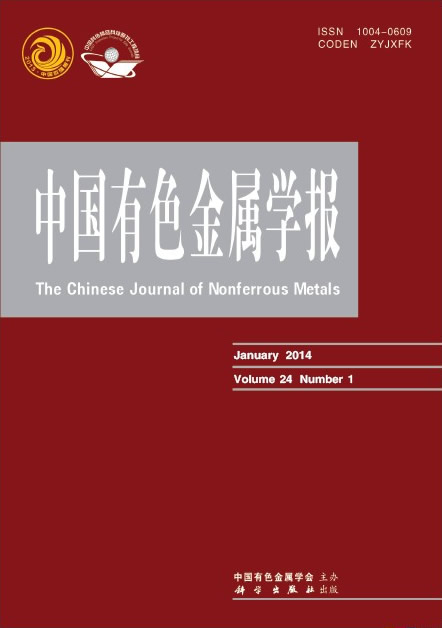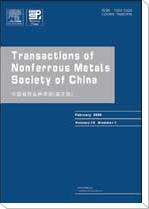(合肥工业大学 材料科学与工程学院,合肥 230009)
摘 要: 基于高压扭转工艺,采用XRD、TEM、HRTEM等方法研究不同扭转圈数(1圈、2圈和5圈)对Al-Zn-Mg-Cu合金第二相的影响。结果表明:室温条件下,高压扭转变形过程中,MgZn2相发生了回溶现象;由于基体中大量的针状半共格第二相转变为稳定的块状非共格第二相,界面错配度增大,比界面能增大,热力学的平衡关系为MgZn2相回溶提供驱动力。塑性变形产生了大量的位错切过MgZn2相,引起了MgZn2相的破碎,并提高了Zn原子和Mg原子溶入基体的扩散系数,促使MgZn2相回溶至Al基体中。
关键字: Al-Zn-Mg-Cu合金;高压扭转;MgZn2相;回溶;位错
(School of materials science and engineering, Hefei University of Technology, Hefei 23009, China)
Abstract:The effects of different torsional number (1, 2 and 5) on the second phase of Al-Zn-Mg-Cu alloy were studied by means of XRD, TEM and HRTEM based on the high-pressure torsional process. The results show that, under the condition of room temperature and high pressure torsion deformation process, the MgZn2 phase dissolving phenomenon happens; because a large number of acicular half coherent second phase in the matrix into the second phase, the stable block incoherent interface mismatch degree increases, then the thermodynamic equilibrium provides driving force for back-solution of MgZn2 phase. The MgZn2 phase is cut by a lot of dislocation generated by plastic deformation, causing the MgZn2 phase broking, and improve the diffusion coefficient of zinc and Mg atoms into the matrix, prompting MgZn2 phase back into the solution, then into the Al substrate.
Key words: Al-Zn-Mg-Cu alloy; high pressure torsion; MgZn2 phase; back-solution; dislocation


